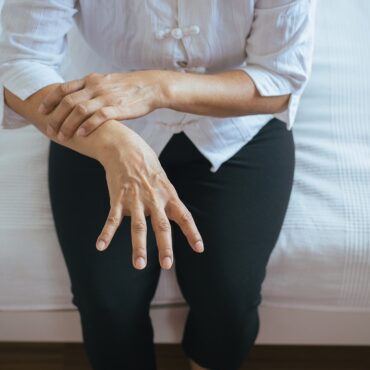-
 play_arrow
play_arrow
BayRadio Listen Live Broadcasting in Spain
Sciatica or radicular pain is one of the main causes of consultation in hospital emergencies.


This pain can be acute or become chronic becoming very annoying. It consists of an electric shock, numbness or radiating pain that is reflected by different parts of the leg and that can reach the foot or even both.
Although the most common is that it remits after a few days and that the pain is controlled, when the pain is very intense, persists and relief is not achieved with conventional analgesics, it is advisable to go to a specialist in pain treatment.
Dr. Jorge Orduña, head of the Pain Unit of Quirónsalud Torrevieja and explains more about sciatica and its most advanced treatments.
What is Sciatica?: Why It Occurs and Symptoms
Sciatica is the “popular” name for radicular pain, which is one that occurs, in the form of electric shock and numbness, when the spinal nerves are compressed.
The spinal nerves are responsible for providing sensitivity and mobility to the legs, and can be compressed at various points in their journey from the spinal cord to the foot.
As Dr. Jorge Orduña explains, this compression “produces an initial inflammation that, over time and depending on the intensity of its cause, can cause injuries to the nerve, leaving sequelae.”
The symptoms of sciatica are:
• Pain running through different parts of the leg/arm/chest, or abdomen.
• Sensation of numbness of a specific area of the leg / arm / chest or abdomen.
• Sensations of electricity, hypersensitivity or burning in specific areas of the leg / arm / chest or abdomen.
• Motor weakness of the painful area.
In addition, depending on the degree of compression, the nerve injury and whether there is one or more compressions, the symptoms will be more or less acute and will affect “only one side of the body, both or different parts”.
Types of Sciatica
• Protrusion / hernia. It is an alteration of one of the discs of the spine to which is added the exit of the same from its usual area.
• Intervertebral foramen. It is a narrowing of the bony duct through which the nerves exit: the osteoarthritis of joints called facets causes it to narrow and hinder the exit of the nerve, causing compression.
• Stenosis of the channel through which the nerves run. Usually caused by calcifications of ligaments / osteoarthritis of the joints or by alterations of the discs that compress the spinal nerves in their path.
How can sciatica be treated?
Treatment of sciatica depends on three factors:
• The intensity of the pain.
• If there is an associated weakness.
• The period of evolution.
Once the level of nerve compression has been located and defined, specialists can opt for pharmacological or interventional treatments (by infiltrations) to treat the problem from where it is occurring.
“These interventional treatments (infiltrations) allow immediate pain relief and with hardly any recovery periods. The prolonged duration of relief allows us to work together with rehabilitators/physiotherapists and functional recuperators in activities aimed at strengthening the structures adjacent to the injured area and thus protecting it, allowing in many cases to recover the quality of life.” The specialist explains.
Treatment
Some of the techniques used in the Pain Unit of Quirónsalud Torrevieja to treat sciatica are:
• Lumbar epidural. Thanks to the use of X-rays, specialists deposit medication next to the compression of the spinal nerves, improving the pain from where it is occurring.
• Radiofrequency of the dorsal root ganglion of the spinal nerve. In this neuromodulator treatment, the doctor places a needle which transmits electricity to modulate the transmission of pain in the area of the central nervous system where pain information is integrated.
• Neurostimulation of posterior cords. This is an advanced treatment in which an electrode is placed on the patient’s spine.
• Intradiscal treatments with regenerative medicine. The objective is to deposit pro-regenerative substances from the patient himself in different parts of the deteriorated disc, improving the situations of disc-osteoarthritis, protrusions and herniated discs.
• Intradiscal treatments with radiofrequency / laser or substances. They are applied directly to the inside of the injured disc.
What is the success rate of these techniques?
According to Dr. Jorge Orduña, all these techniques “achieve, in a high percentage of cases, relief greater than 80% of pain with periods of pain relief above 6 months“.
In addition, some of these treatments, such as intradiscal, “can be practically definitive, while neurostimulation is applied to patients already operated, allowing relief of many years.”
The Pain Unit of Quirónsalud Torrevieja includes specialists in pain treatment (anaesthesiologists, rehabilitators, traumatologists), who work in close relationship with other specialists to offer a comprehensive and personalized service to each patient aimed at treating everything that concerns the pain of each patient.
If the cause that produces the pain cannot be treated or relieved or when the treatment of pain has not been insufficient, specialists will evaluate other options, such as surgery.
Written by: BayRadio News
Recent Posts
- Breast lift surgery: everything you need to know
- A Silent Disease: The Early Signs of Parkinson’s You Shouldn’t Ignore
- British buyers still top foreign home purchases in Spain: despite Brexit, UK leads the way in 2024
- Torrevieja unveils the charity race “5K Steps That Matter by Quirónsalud” in aid of AFECÁNCER
- Discover how breast reduction can transform your life: from pain to confidence

Ctra. Cabo La Nao, CC La Nao, Local 6 03730 Javea, Alicante, Spain
Advertise with us
Do you have a business in Spain? Do you provide a service to the expat community in Spain? Would you like your message to reach over 500.000 people on a weekly basis?
BayRadio is a community orientated radio station offering fantastic content to our many listeners and followers across our various platforms. Contact us now and find out what Bay can do for you!
Our business is helping your business grow.
BAY RADIO S.L. © 2024. ALL RIGHTS RESERVED. WEB DESIGN BY MEDIANIC







